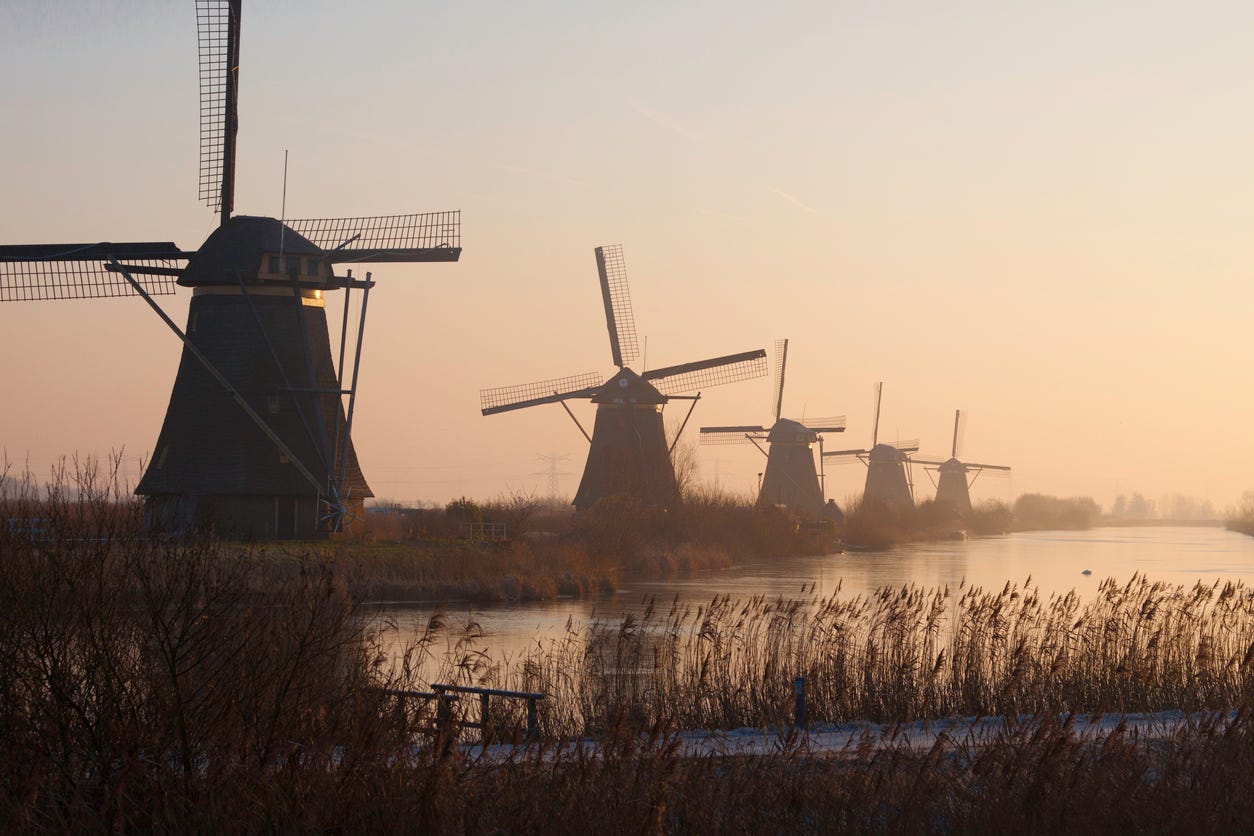Why are Dakotans Not Like Scandinavians?
Since North Dakota was settled by primarily by Scandinavians, then why aren’t the Dakotas culturally similar to Scandinavia?
A gentleman once asked me why the Dakotas are not similar to Scandinavia, given that so many of the inhabitants in North and South Dakota come from Scandinavia. I thought that was an interesting question worth writing an article about. Especially given that I am a Norwegian who lived a year in North Dakota about twenty years ago.
The difference between Norway and North Dakota was stark:
I honestly felt totally out of place, like I was on an alien planet. What made the feeling, so bizarre was the fact that so many of the faces on the street looked Norwegian.
Not odd given that people of Norwegian descent represent the largest ethnic group in North Dakota. Despite the uncanny physical resemblance, nobody dressed, talked or acted Norwegian in any way.
Their brains had been uploaded with different software making them act American, rather than Norwegian. The difference stood out even more clearly because I moved straight to the Netherlands after my year in North Dakota. The Dutch are not Norwegian, yet it was eerie how much it felt like coming home to Norway. Stuff suddenly made sense in a way it had never done in North Dakota.
The experience hammered home that culture does not get defined by the genetic heritage of the people who make up a society. So, what exactly does define a culture — or more specifically, what causes a culture to change over time? Why did North Dakotans end up so different from Norwegians? And why on Earth are Dutch people so much more similar to Norwegians than Norwegian descendants in the US?
I want to tackle these questions from two different angles:
How people get shaped by the society and culture they live in.
How economic, geographic, and social factors push cultures in different directions.
Before examining the issue from these two angles, let me give a bit of context. The big settlement boom in North Dakota began around 1870, which coincides with large emigration waves from Norway to the US. Norwegians were the largest ethnic group in North Dakota and probably still are. Why exactly then? A major technological shift ties these events together. Railroad connection to North Dakota arriving around this time opened up the prairies for settlers.
Meanwhile, this railroad connection allowed large amounts of grain from Russia, Ukraine, and the US to arrive in European markets. Before railroads, Ukrainian grain could not easily be shipped to the rest of Europe. Another important impact was that Russian timber could be moved to harbors cheaply.
Read more: Connected: Railway, Steamships and Trade in the Port of Odessa, 1865–1888
Both these events triggered emigration from Norway. It caused falling prices for lumber, which was an important Norwegian export, while falling grain prices caused hardship for farmers all over Norway. That is why so many came to the US in that time period.
If we are to analyze how North Dakotans ended up different from Norwegians, we have to understand life in America in the 1870s as well as how Norwegian and North Dakotan society diverged from that time period towards the present day.
How We Are Shaped By Culture and Language
One thing I have noticed frequently when following American discourse is that there is an implicit belief in that you are defined by your skin color:
“Don’t act so white,” Americans might say, or they might say, “He looks black but acts white.”
To Americans these are pretty common and well-understood expressions, but to many of us Europeans they sound bizarre. As Europeans, we live on a continent made up of a large number of states with unique cultures, languages, and histories. The idea that we should act and think the same because we share a skin color seems rather odd.
I recall hanging out with black and white American girl many years ago in San Fransisco. We were going to eat at an Indian Fusion restaurant. I still remember the food was absolutely amazing. While walking, I remember the girls making various remarks about the difference between blacks and whites. They were talking about how putting the trash can under the sink was such a typical “white thing,” while keeping it on the kitchen floor was the “black thing” to do. I remember thinking to myself: “No, keeping it under the sink is the Norwegian thing and keeping it on the kitchen floor is the Dutch thing to do.”
It is a strange little random observation, but over the years I have kept noticing how Americans have a strong habit of racializing human behavior. What to me represents different cultures, is a matter of race in America. It isn’t even limited to blacks and whites. I remember being surprised by how American comedian Hasan Minhaj would refer to behaviors and experiences in his family as being about what “brown kids” experience, rather than say Indian or Muslim kids. Demanding parents who want you to be a medical doctor was not explained as a trait among Indian or Pakistani immigrants, but as something “brown parents” do.
I wanted to lead with these recollections because I wanted to hammer home the idea that we are all products of the culture we grow up in. The people around us and the society we live in shape our behavior and values, not our DNA or skin color. Skin color may certainly give certain privileges or make us face prejudice, but it isn’t going to decide whether we prefer rice to potatoes or where we prefer to put our trashcan.
My Vietnamese-Norwegian Friend in North Dakota
One of my odd early experiences in Grand Forks, North Dakota, was sitting right across a Vietnamese-looking guy in my class. We began talking, and I quickly realized that he was Norwegian as well. So, we switched to Norwegian and continued the conversations. I asked where he was from. Turns out he was from the same town as me. What were the odds? The next implausible coincidence was that he had had my dad as his English teacher.
The reason I bring up my old Vietnamese-Norwegian friend is because he proved all too well how culture is thicker than blood. Let me give some context. I frankly felt quite alone in North Dakota. I don’t regret going there. It was an experience worth having, but it reminded me of the quote:
“I used to think that the worst thing in life was to end up alone. It’s not. The worst thing in life is to end up with people who make you feel all alone.”
– Robin Williams, former Hollywood actor and comedian
I met and hung out with plenty of people because Americans are quite hospitable and make friends quickly. Yet, despite being surrounded by people, I felt alone and that was primarily due to a cultural barrier. I thought I knew American culture from numerous visits as a tourist and countless American TV shows and movies. But I really didn’t, and it didn’t matter that all these people around me shared a lot of my Norwegian DNA.
Instead, my Vietnamese-Norwegian friend was my closest friend. We understood each other. We were on the same wavelength. We had the same references, spoke the same language, and had the same culture. My friend obviously had Vietnamese heritage as well from his parents, but to me, he was just like any other Norwegian guy from my hometown. I am not certain how I would have gotten through the year without him. It is hard to not see the irony. I was around all these people who shared a lot of the same blood and appearance as me, but it meant nothing. It didn’t matter that my Norwegian friend had no actual Norwegian DNA. In the end, what mattered is that he had the same Norwegian culture.
Your skin color or DNA isn’t what makes you Norwegian. Being raised in Norwegian culture is what makes you Norwegian.
How Language Shapes Mindset
But if North Dakotans were raised around all these Norwegians, why didn’t they turn into Norwegians? That brings me to an important point I feel is often overlooked in the US, which is language. When discussing diversity in Europe and the US, I frequently notice Americans and Europeans talk past each other. To Americans, there is no diversity in a European city if they cannot see physical differences on people’s faces and skin. In a country so focused on race, the understanding of diversity is closely tied to race.
Keep reading with a 7-day free trial
Subscribe to Erik Examines to keep reading this post and get 7 days of free access to the full post archives.







